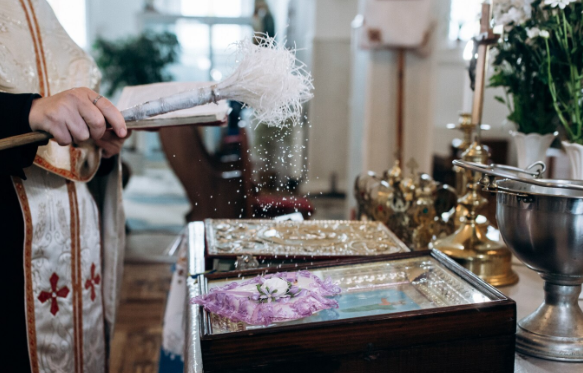When Objects Carry Holiness
Some containers hold coffee; others hold car keys. And then there are those rare and wondrous vessels that hold splinters of saints’ bones, locks of blessed hair, or fragments of martyrdom made holy by the touch of grace. Enter the reliquary.
More than just ecclesiastical décor, reliquaries are a tactile testament to the Church’s deep and reverent memory. They connect the living to the sanctified departed—not in sentimentality, but in substance. For Catholics, a reliquary is where heaven stoops low enough to rest inside a carefully crafted frame.
What Is a Reliquary?
At its most basic, a reliquary is a container for a relic. But describing it that way is a bit like calling the Sistine Chapel a ceiling with paint on it. Reliquaries are expressions of honour, artistry, and theology in one exquisitely symbolic package.
They come in many forms: locket-sized pieces for private devotion, ornate monstrance-like structures for solemn veneration, casket-style reliquaries for major relics, and even wall-mounted niches embedded into altars. Whether Gothic, Romanesque, Baroque, or modern minimalist, each design points to the same truth—the sanctity of the one it holds.
Their origins trace back to the early Church, when believers collected fragments of martyr’s bones or blood-soaked garments as tangible connections to holiness. By the Middle Ages, reliquaries were architectural marvels, reflecting the status of the relic within. And today, they continue to offer a visible, touchable link between the faithful and the saints.
The Liturgical Role of Reliquaries
While often associated with shrines and side chapels, reliquaries have an active role in the liturgical life of the Church.
For one, relics of saints are traditionally sealed into the altar at the dedication of a church. That means every time Mass is celebrated at that altar, it is being done—quite literally—on the foundation of the saints. Think of it as liturgical continuity from the catacombs to your parish.
Reliquaries may also be placed on or near the altar during feast days of the saints, especially when that saint holds particular local importance. Some are used in processions, carried reverently through the congregation for veneration. It’s not theatre—it’s theology in motion, where we honour those who’ve run the race and now cheer us on.
Devotional Use: Faith, Focus, and Presence
Outside formal liturgy, reliquaries find a cherished home in private prayer, parish devotions, and personal oratory corners.
There’s something uniquely grounding about kneeling before a reliquary, whether it contains a saint’s hair or a sliver of their clothing. It anchors prayer in the incarnational reality of the Church: real people, real lives, real holiness. Pilgrims will travel hundreds of miles just to spend a moment in the presence of a beloved relic. The reliquary becomes not just a vessel, but a point of encounter.
Many parishes or religious communities reserve reliquaries for special devotions—fortnightly veneration, All Saints’ Day prayer nights, or school visits that bring saints to life (with fewer PowerPoint slides and more wonder).
Design, Materials, and Symbolism
Now, onto the glories of ecclesiastical craftsmanship. Reliquaries are often made from noble materials—gold, silver, brass, or wood—and adorned with decorative motifs that speak volumes: sunbursts for heavenly glory, cross shapes for martyrdom, architectural spires to suggest a miniature heaven on earth.
Some are encrusted with gemstones, not out of vanity, but to reflect the priceless nature of what they contain. Others are clear and simple, with glass or crystal casings allowing the relic to be viewed without excessive embellishment.
Designs vary by region and era—Gothic reliquaries may resemble tiny cathedrals, while Baroque versions favour drama and light. The unifying principle? Beauty that honours the sacred.
From Past to Present
In a world overrun by the disposable and the digital, reliquaries stand as quiet rebels. They remind us that memory is meant to be preserved, that holiness has a history, and that we walk in the footprints of saints who once needed sandals and sleep just like us.
Whether you’re a parish priest looking to inspire your congregation, a sacristan enhancing your church’s liturgical life, or simply someone drawn to the beauty of sacred art, the reliquary is a worthy investment—devotional, historical, and deeply spiritual.For those interested in exploring different styles and materials used in sacred vessels, there are several trusted online sources where you can find beautifully crafted items like these.









